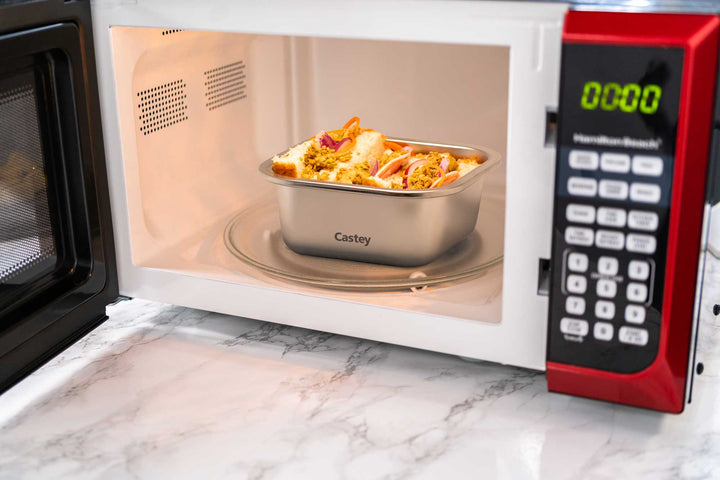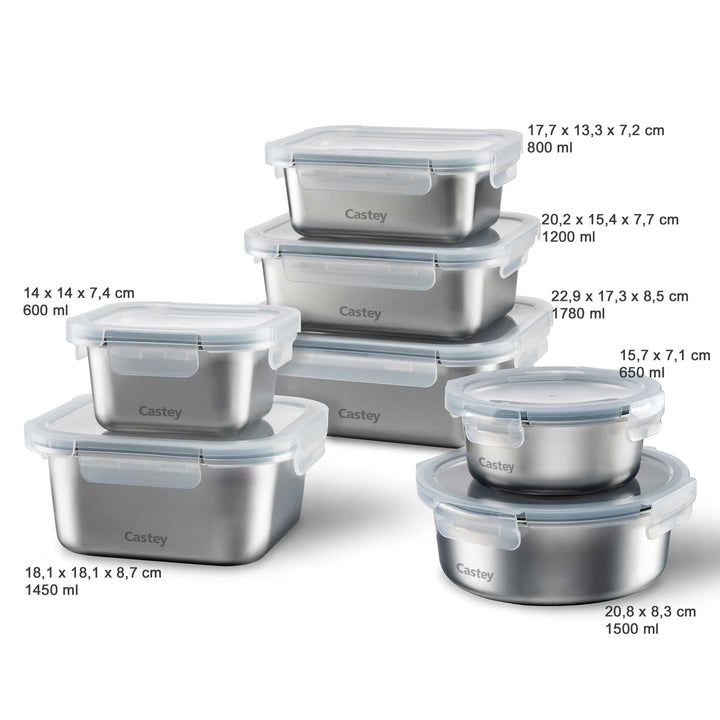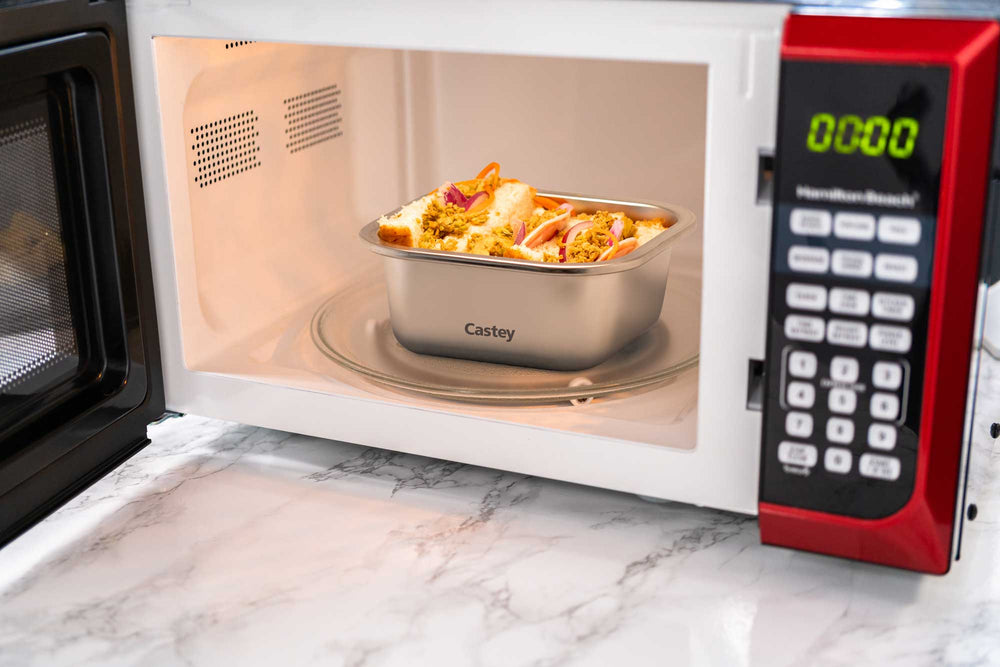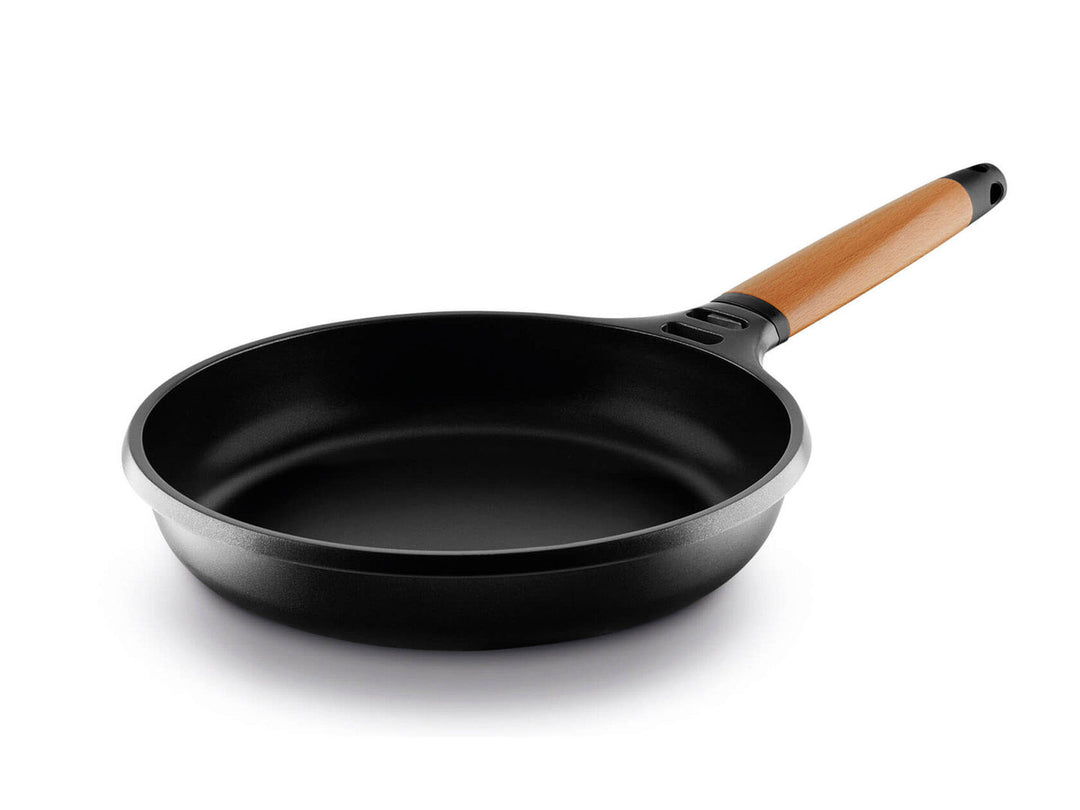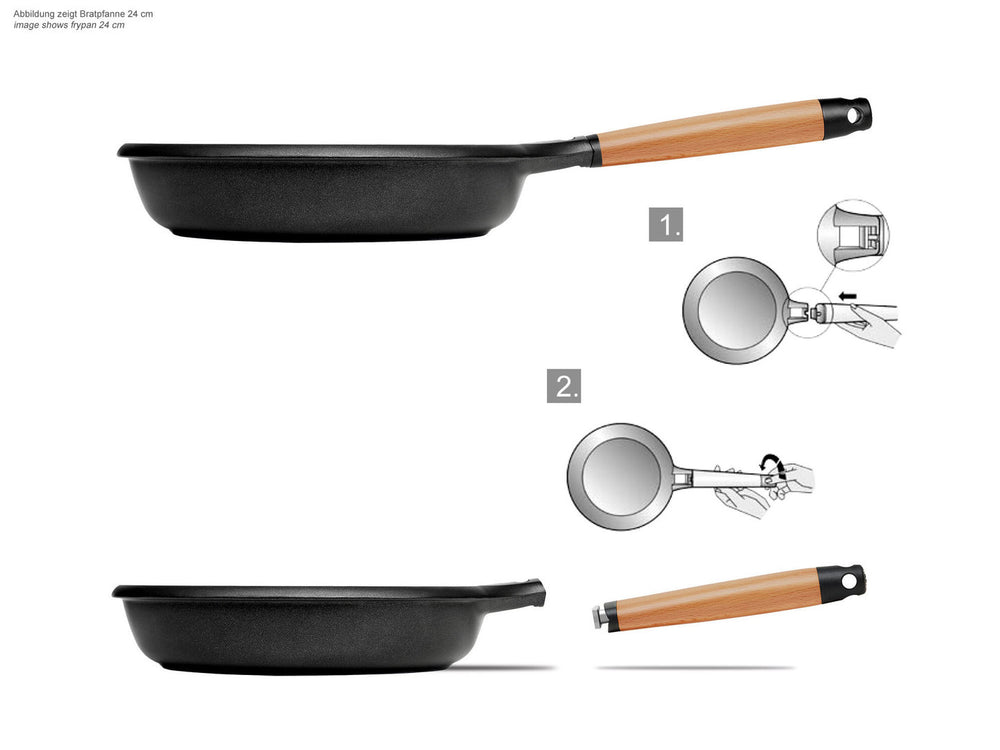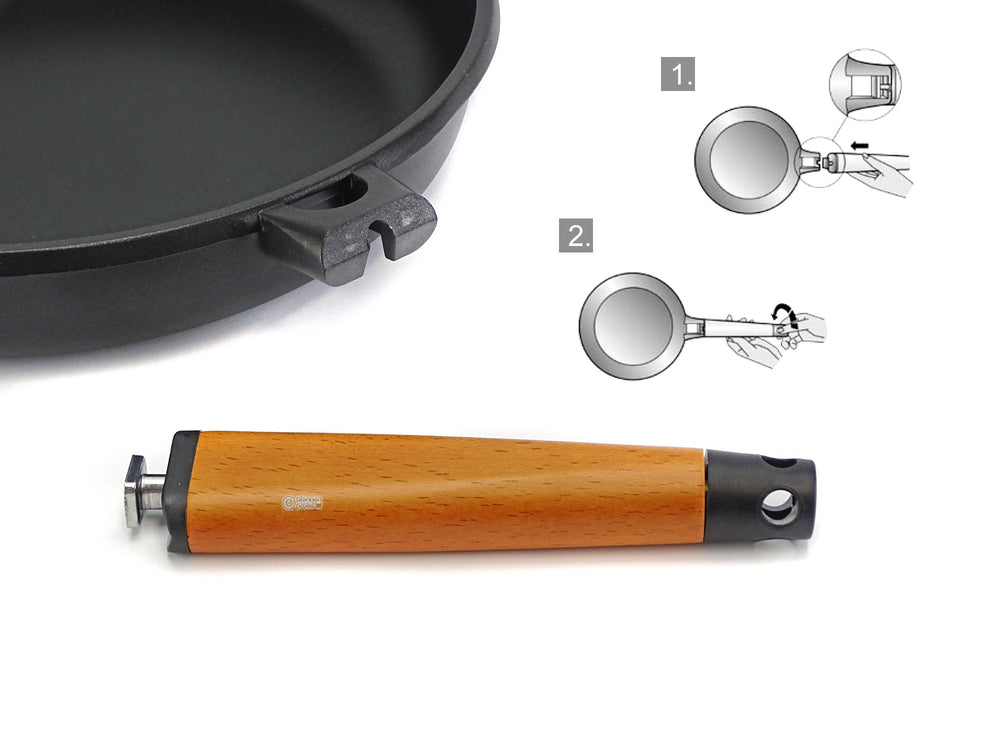The next generation of food storage containers
The stainless steel food storage container from the Spanish brand Castey offers you many practical advantages in everyday life compared to conventional plastic or glass food storage jars.
Lightweight and robust, perfect for on the go
The stainless steel food storage container from Castey is much lighter than those made of glass and is therefore perfect for taking with you, whether to the office, to school or on an outing.
The stainless steel food storage container from Castey is also much less sensitive than those made of glass (no risk of breakage) and therefore offers a big plus in terms of safety and durability in everyday use.
Tight seal for safety and freshness
The lid is made of naturally BPA-free PP plastic and has a silicone seal. This ensures a tight, leak-proof seal. Food stays fresh for longer and everything stays where it belongs when transporting the container.
From the freezer compartment straight into the oven or microwave
The stainless steel food storage container from Castey can do what other food storage containers made of glass or plastic cannot, such as going straight from the freezer to the oven or microwave. No defrosting, no decanting, no risk of glass breakage due to temperature shocks and no matt, melted areas in the plastic due to heating fatty foods in the microwave.
Microwave-safe. Yes, really!
Metal objects in the microwave? The answer is usually a resounding no, because that causes sparks. But thanks to the cleverly calculated and then high-precision manufacturing design of the stainless steel container without any corners or sharp edges (where sparks would otherwise form), the risk of sparks is completely eliminated and the stainless steel container can be used safely in the microwave.
- High-precision stainless steel container without corners or sharp edges.
- 18/10 stainless steel with a hygienic, non-porous surface.
- Container temperature-resistant from -40 to +400° C.
- Lid made of transparent plastic with silicone seal
- Microwave and oven safe without lid.
- Capacity approx. 0.8 liters.
- Dimensions of the container with lid approx. 17.7 x 13.3 x 7.2 cm.
- Easy to clean and dishwasher-safe.
- Seal can be removed for cleaning to ensure perfect hygiene.
PfannenProfis tip for use: When using in the microwave, please ensure that the container is at a sufficient distance from the microwave walls, especially for microwave ovens with a turntable. Max. 10 min / 800 W.
Understanding the information on the size / diameter, height and capacity of cookware:
1) The most important information: diameter = upper inner diameter

The diameter is the most important indication of the size of pots and pans. The measurement is taken at the top inside , i.e. on the inside of the pan/pot rim; hence the designation upper inner diameter, which you will find in our item descriptions. A 28 cm pan has a diameter of 28 cm from one inner edge to the other inner edge. This measurement method is an international standard and authoritative, unless expressly stated otherwise in the item description.

For square pans (e.g. many grill pans) and roasters, the size is given as the product of two lengths. Here you measure again at the top inside, at the longest point, which is usually in the middle. For example, many grill pans have a size of 28 x 28 cm.

Fish pans and roasters often have an oval shape. As shown above with the square pans, the longest internal dimension is given here. Such a 38 cm fish pan has an inner length of 38 cm on its longest side. At right angles to this is the short side of eg 24 cm. As a result, the pan would be declared as 38 x 24 cm.
2) Bottom diameter = contact surface

When we talk about base diameter, we mean the diameter of the contact surface, i.e. the surface with which the pan, pot or roaster stands on the stove. Not meant is the frying surface! The information about the base diameter can be helpful when it comes to choosing a suitable cooking surface for the cookware. The size of the cooker and the diameter of the base of the cookware should match to a certain extent in order to avoid damage to the cookware and to ensure that the cookware functions as well as possible.
ATTENTION, induction-suitable aluminum cookware:
Please note that cookware made of aluminum / cast aluminum for induction cooking usually has a stainless steel disc on the base, the diameter of which is often smaller than that of the base (marked in blue in the picture). Where this applies, you will find the corresponding information in our item descriptions.
3) Height of pots and pans

Unless expressly stated otherwise, the indication of the height of a cookware describes the outer edge height, from the top edge of the cookware perpendicularly to the contact surface, without taking lids, handles etc. into account.
The inner height (i.e. from the frying surface up to the edge) can be determined approximately by subtracting the base thickness from the height.
4) Capacity of a cookware

When it comes to capacity, there are often misunderstandings: the capacity of a cookware indicates how much the container can hold at most. That always means filling up to the brim! This is international standard. The filling quantity that can be used when cooking is always less than the capacity.
Please note that in the case of pressure cookers, for safety reasons, the filling quantity permitted in pressure cooking is significantly lower than the capacity of the pot.
 DE: 4.90 €
DE: 4.90 €
 EU: from 14.90 €
EU: from 14.90 €
 UK: from £18.40, delivered duty paid
UK: from £18.40, delivered duty paid
 CH: from 19.90 € (duties & charges may apply with / after delivery)
CH: from 19.90 € (duties & charges may apply with / after delivery)
 USA & CND: from 35.70 € (duties & fees may apply with / after delivery)
USA & CND: from 35.70 € (duties & fees may apply with / after delivery)
More details about shipping costs here.








